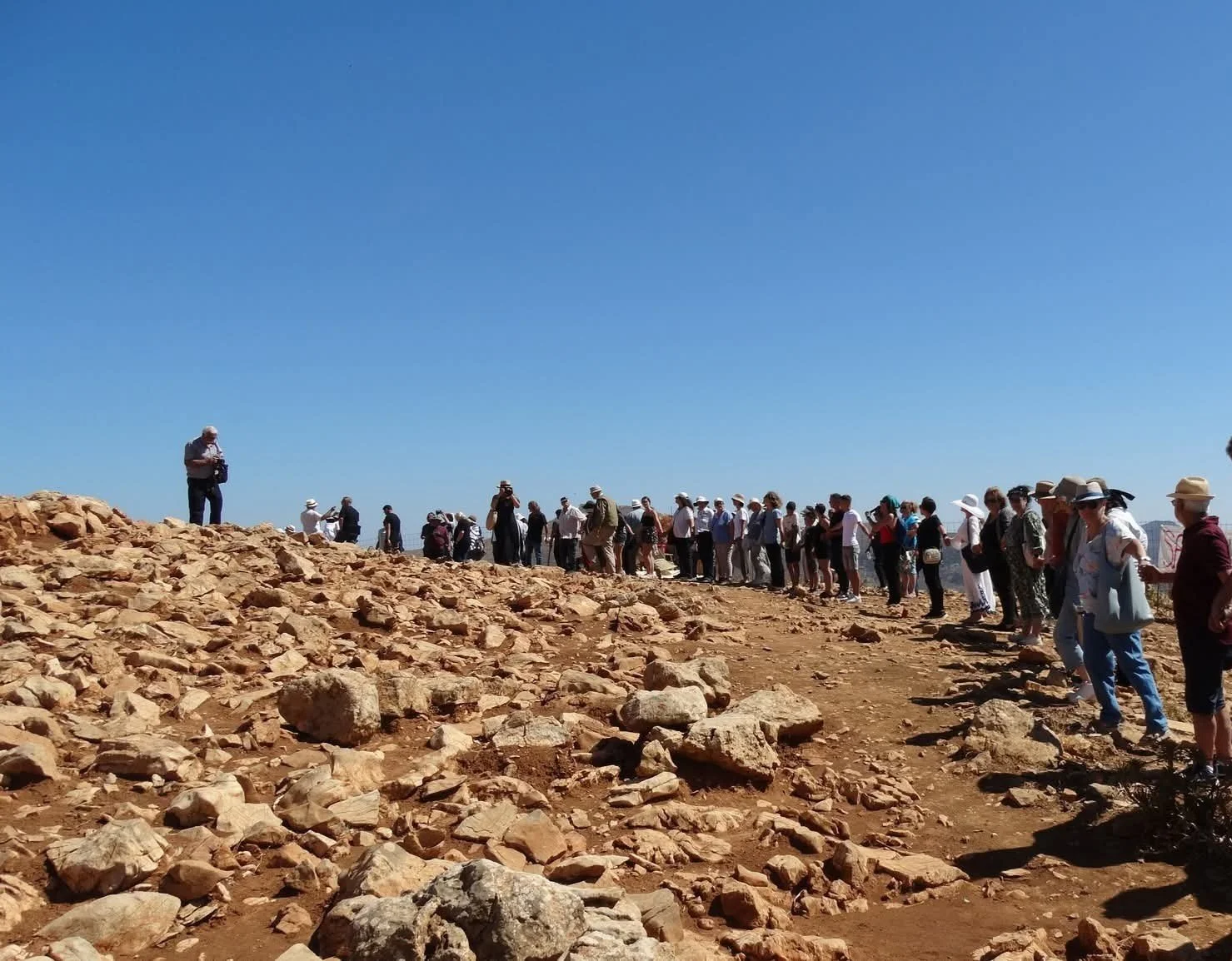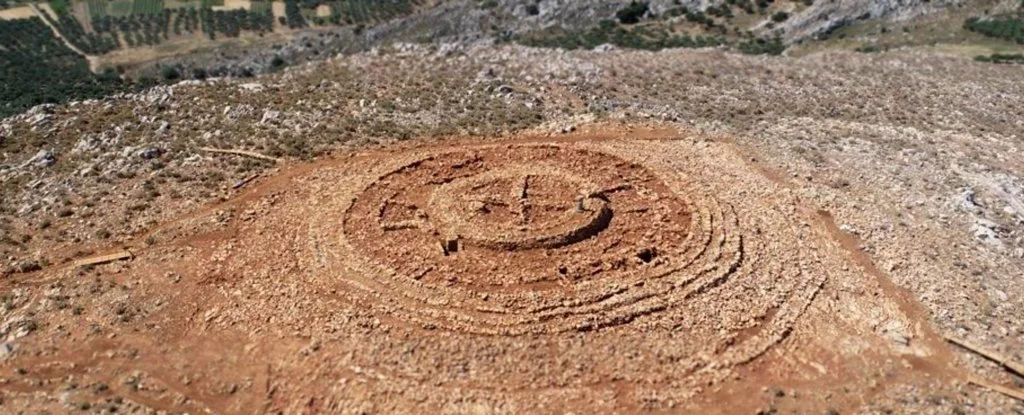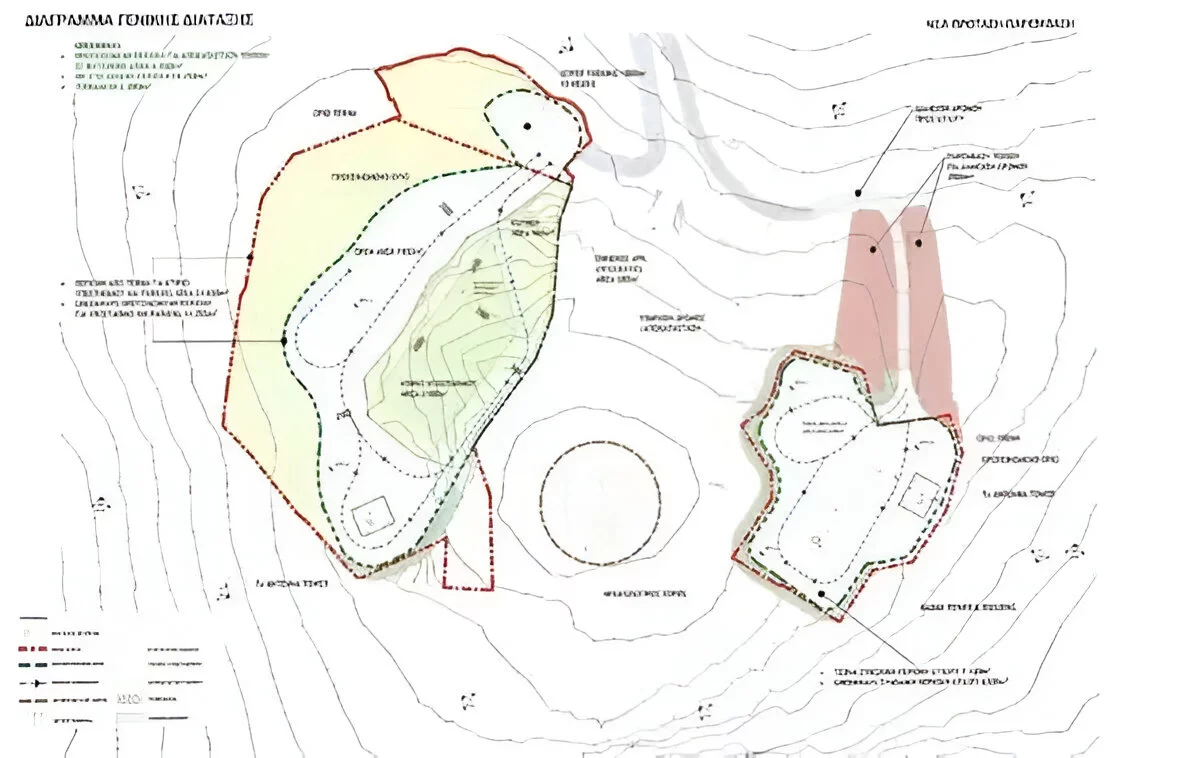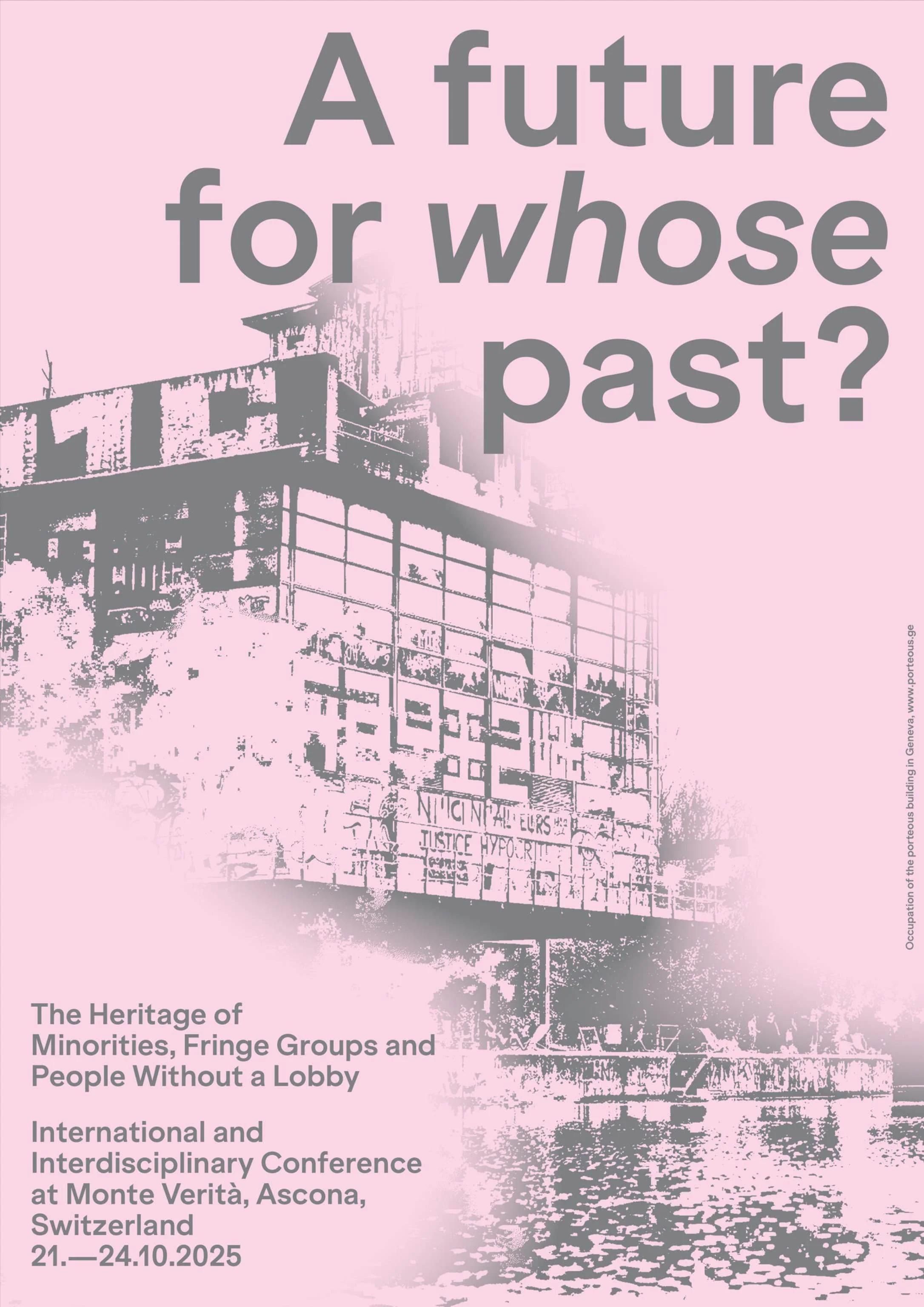International Support Needed: Save Papoura Hill Archaeological Monument and Landscape
Local citizens form a symbolic circle around the monument©The Citizens’ Committee for the Protection of Papoura and the Heritage of Pediada
By Manolis Klontzas - on behalf of the Citizens’ Committee for the Protection of Papoura (facebook page)
Amid the construction of yet another airport in central Crete, a large and unique archaeological site was uncovered at the very top of Papoura Hill, in Pediada region. The government initiated exploratory ‘rescue excavations’ in June 2024, to prepare for the planning of an airport radar installation. National authorities have meanwhile confirmed ‘a unique find of exceptional interest’ [quote from link above] but the Government nevertheless continues with the planning of a potentially disastrous project for heritage and the local community.
Areal view of Papoura Hill Archaeological Monument, Crete, Greece [Photo of the Ministry for Culture - https://www.culture.gov.gr/el/Information/SitePages/view.aspx?nID=4988#prettyPhoto]
Significance of Papoura Hill Archaeological Monument
The excavation uncovered a concentric stone structure of 50 meters in diameter, dating back to the Bronze Age—and the earliest phase of the Palatial Period (Protopalatial Period around 1900 BC). Naturally it is too early to expect a definite interpretation about the scientific, historical, archaeological and museological values of the discovery. But the Papoura Hill archaeological monument is undoubtedly one of the most important finds in the Mediterraneans, in recent decades. It has the potential to reshape our understanding of not only Bronze Age culture, but also that of early State formations, and cosmological frameworks in the Eastern Mediterranean, challenging dominant narratives and assumptions about Cretan prehistory and that of the broader region.
Papoura Hill Archaeological Monument also has the potential to complement and deepen the narrative of the recently inscribed Minoan Palatial Centres World Heritage site, which makes it all the more urgent to ensure its full and careful study, protection, and integration into future heritage discourse. As is standard worldwide, assessments require the publication of excavation data, time for scholarly analysis and review, and open academic dialogue, prior to continuing further planning.
A new airport radio installation
These necessary studies, however, clash with the fast-paced project timelines of the international airport construction, imposed by national and local authorities and developers. Rather than making an effort to secure the necessary time and research on the new discovery, and reevaluate the planning of the airport, the Minister of Culture has recently announced the unforeseen installation of a radar system for the international airport on Papoura Hill, in the direct proximity of the excavated feature.
The permisis of the circular archaeoloical site and the contours of the radar installation.
Image found on https://www.argophilia.com/news/radar-installation-on-papoura-hill-approved/243407/
The Citizens’ Committee for the Protection of Papoura
The ongoing development, and disregard to the heritage and local communities are the tip of an iceberg that deeply concerns the Citizens’ Committee for the Protection of Papoura Hill and the Heritage of Pediada region. The Committee was formed as a collective of local residents, members of the community, and scientists — archaeologists, architects, legal experts, environmental scientists, and others. What unites us is our shared concern and responsibility to protect the monumental ensemble of Papoura, its historical and natural identity, and the broader heritage of our region.
We observe that the sequence of developments transforms Papoura’s landscape from a space of life, culture, and memory into a field of inert matter, technical imposition, profiteering, and geopolitical control. The process is dominated by unregulated accumulation of state-corporate capital in the local ecosystem, driven by the pursuit of maximum profit for those who have no further connection to the place. It violently undermines the values of the underlying cultural, historical, economical, agricultural, social and natural system, as well as the lives and values of the local community. The interventions destabilize the local economy, transforming it from a place to admire to a place to leave. Long-standing agricultural, pastoral, and apicultural practices of the region — the very metabolic bond between society and land — are on the verge of being lost.
And this happens structurally across Greece, for example, it was not long ago that an industrial wind farm was built within the officially recognized monumental landscape of the “Isthmus of Ierapetra”, causing controversy among scientific and local communities. The case was featured during an OWH webinar in 2022, and the contestants (of which the author took part) won the EEA European Archaeological Association Heritage Award for their work.
We would like to draw attention to the following observations:
The radio tower will destroy Papoura Hill Archaeological Monument:
Papoura Hill Archaeological Monument was purposefully placed atop the hill. The hill and scenic characteristics were, and still are, an integral part of the structure and are therefore as historically significant as the monument itself. The radar installation on any location on Papoura Hill destroys the archaeological monument, erasing further understanding, values and conservation of the monument.Aggressive and authoritarian approaches towards communities:
It is not only the decision to install the radar, but also its timing (ahead of knowing full scientific assessment and identifying the necessary mitigation measures) and practice (without any form of local consultation) that is violently undermining local and scientific communities, who are all collaborating to minimise the effects of top down development in the region and landscape. Meanwhile, local and scientific communities are entirely left out of the process, or ignored.Structurally disregarding evidence in favor of ‘development’:
The ‘rescue excavations’ fall short of the systematic, peer-reviewed research that such a discovery demands. It is a makeshift term to distract from the need for systematic, interdisciplinary scientific research, and it undermines scientific, professional and institutional codes. Instead, it creates a pseudo-scientific justification to legitimize and facilitate developments, veiled by a thin layer positivist approach where heritage is blatantly instrumentalized without further substantiation. An example of this attitude is promoted by the Minister herself, stating that “only Greece can have a modern radar where millennia ago there was a similar structure”Neglecting responsibilities:
Meanwhile, this approach neglects the actual responsibilities of the authorities. We currently only see authoritarian and opaque governance. The Central Archaeological Council (KAS) is heavily influenced by the Government, and seems to advance state-corporate agendas, rather than safeguarding good scientific practice within the realm of (inter) national law.Danger:
By introducing military infrastructure into a heritage landscape, radar installation raises security concerns and threatens the safety and peaceful use of the landscape and its people.
With all of the above in mind, the Citizens’ Committee for the Protection of Papoura Hill has stated:
“The public announcement of the installation, prior to any opinion from the Central Archaeological Council (KAS) — whose members are appointed by the Minister herself — blatantly violates Law 4858/2021. This law clearly stipulates that archaeological research must precede evaluation, and only then — if no insurmountable obstacles arise — may project studies be considered. Reversing this sequence undermines the integrity of archaeological protection, the safeguarding of heritage as a whole, and nullifies the principle of prevention, a cornerstone of Environmental Law enshrined in Article 24 of the Greek Constitution.”
Please note:
Central Archaeological Council (KAS) is the supreme advisory body for all matters pertaining to the "protection of antiquities and cultural patrimony in general", regulated by Law 3028/2002
Article 24 of the Greek Constitution affirms that the protection of the natural and cultural environment is both a duty of the state and a right of every person.
A call for action
The local community, archaeologists, scientists, and every global citizen caring about democracy, ecosystems, memory, or heritage will not remain silent. With the international airport (of which the radar is part of) built for the international community, we ask this same international community to raise their voice against the local damage done. We ask for solidarity to strengthen our case and protect Papoura from destructive developments. Please sign this petition!
About the Author
Manolis Klontzas is an archaeologist and historian. He has a long-standing interest in the conservation of monuments, cultural landscapes and the impact of Anthropocene practices on ecosystems and heritage. Manolis is active in the community movement for the protection of monuments and heritage.







